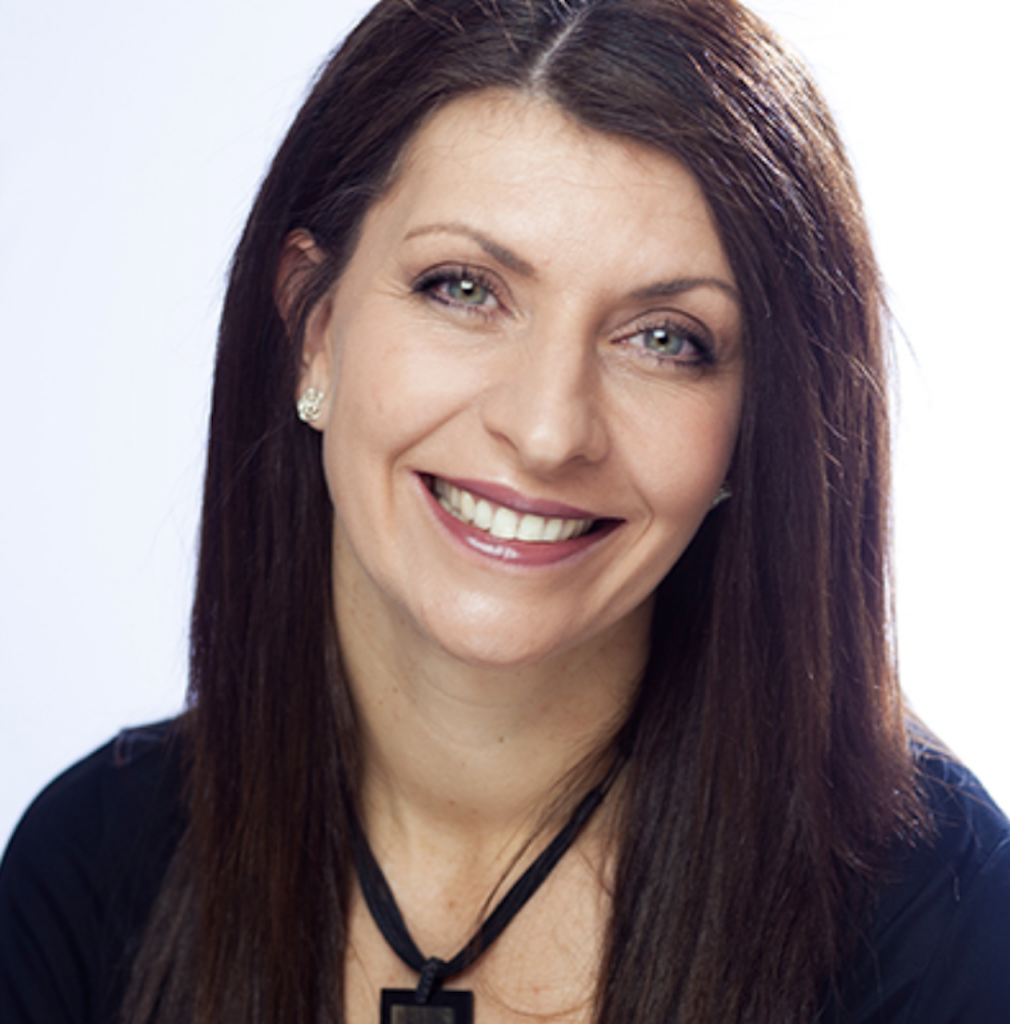The Importance of Being Your Own Advocate
- When Karen Thrussell first noticed she was gaining weight, her doctor’s dismissed it was hormonal. It wasn’t until she began feeling something unusual in her abdomen and sought additional medical advice, leading to the discovery of a 16.5-pound tumor.
- She was diagnosed with retroperitoneal liposarcoma, a rare type of cancer that develops from the body’s connective tissues, at age 48.
- Now, 55, the mom of two’s story is a perfect reminder on how important it is to be your own advocate and push for answers when it comes to your health.
- When it comes to your health, be a little pushy. You know your body better than anyone else. When you see a doctor for a problem, don’t hesitate to make sure that your question is fully answered and that you are comfortable with the plan moving forward.
- From a doctor’s perspective, every problem should have a diagnosis, a treatment, a plan for follow-up, and a plan for what happens next if the treatment doesn’t work.
According to Keck Medicine of UFC, a sarcoma is “a rare type of cancer that develops from the body’s connective tissues, such as fat, muscle, blood vessels and fibrous tissue,” and approximately “20 percent of sarcomas develop in the back of the abdomen, also known as the retroperitoneum, next to the kidneys.” Retroperitoneal sarcomas often take a while to develop and can reach an upwards of 20 to 30 pounds.”
Read More
“They told me it was a sign of menopause, even though at that point I looked pregnant, except it wasn’t completely smooth or hard it was soft and lumpy,” Thrussell explained.
However, a strange downward “push,” which she likened to a feeling of when a woman’s “body is getting ready for birth,” prompted Thrussell to get checked again, as she suspected she might have a prolapse [when an organ(s) drop out of their normal position.]
RELATED: Burned Out Doctors Make More Mistakes: It’s OK To Talk Openly About This With Them
Thrussell, whose daughters were ages 11 and 14 when this “push” feeling occurred,” was then advised to get both an internal and external ultrasound, which led to a discover of something abnormal on her kidney.
Followup testing confirmed she had liposarcoma.

Thrussell then underwent radiotherapy [a form of treatment using radiation, usually x-rays, to treat cancer] and an 11-hour surgery to remove the large growth, a kidney, and part of her bowel.
“People keep asking me how I didn’t know it was the size of two babies. But my doctors didn’t know either and I had gone to them about it,” Thrussell added.
Coping With a Diagnosis
As for how Thrussell allowed the huge mass to go unnoticed, she explained to the Australia and New Zealand Sarcoma Association, “Because it grew so slowly, it just felt like weight gain. My tumor was not hard, it was really just fatty tissue, so it was soft and jelly-like, and it was all encased. It had wrapped itself around all the spaces in my abdomen, and it did not do anything to me, except make me tired.
“It was quite obvious I had a lot of weight in my stomach. But because of my age, I thought it was menopause. I was trying everything to lose weight, but nothing worked. I also had some hot flushes and some ongoing digestive issues, which I thought might be linked to food intolerance.”
She continued, “I never suspected cancer, because it did just feel like menopause. The symptoms seemed to make sense, and I thought I just had to accept it. The weight seemed to creep up slowly, and my tumor did not show up in any general medical tests, like mammograms or colonoscopies. I was oblivious it was there, because it did not grow inside any of my organs, it was just wrapped around the outside.
It was only when I eventually felt a ‘push down’ feeling – like you feel when you are pregnant – that I went and had a pelvic scan. Doctors told me my organs were okay, but they did see a mass that they could not identify. So, they did a biopsy and realized it was cancer. Then everything happened very quickly. I had radiation before surgery to try and stabilize the growth before they could operate.”
Now cancer free, Trussell admits she’s incredibly “grateful” for her cancer experiencing, adding, “I really am one of the lucky ones.
“Now I want to tell my story to help others who are diagnosed with sarcoma.”
Understanding Sarcomas: What is a Liposarcoma?
If you receive a diagnosis of a common cancer such as prostate cancer or breast cancer you might already have some sense of what that means. But what if you learn you have a sarcoma? These are much more rare, and less likely to be discussed in casual office visits or among friends. In fact, this rare and diverse group of diseases accounts for about 1% of adult tumors and about 10% of tumors in children.
“Sarcomas are rare and the cause in most patients is unknown,” Dr. Vishal Gupta, site director of radiation oncology at The Blavatnik Family Chelsea Medical Center, tells SurvivorNet.
The National Cancer Institute defines sarcoma as “a type of cancer that begins in bone or in the soft tissues of the body, including cartilage, fat, muscle, blood vessels, fibrous tissue or other connective or supportive tissue.”
There are different types of sarcoma based on where the cancer forms. For example, according to NCI, osteosarcoma forms in bone, liposarcoma forms in fat and rhabdomyosarcoma forms in muscle. There are more than 70 types of sarcoma, 50 of which are classified as soft tissue sarcoma.
The typical symptom of sarcoma is a slow-growing, painless mass. But sarcoma can be hard to detect through symptoms.
Be Pushy, Be Your Own Advocate. Don’t Settle
“Most sarcomas don’t cause many of the symptoms that may be associated with other cancer,” Dr. Dale Shepard, director of the Cleveland Clinic Taussig Cancer Institute Phase I and Sarcoma Programs, tells SurvivorNet.
Liposarcoma a type of soft tissue sarcoma is a rare form of sarcoma cancer. It can start anywhere in the body, according to the American Cancer Society, but they most often start in the thigh, behind the knee and inside the back of the abdomen. They occur mostly in adults between 50 and 65 years old. These tumors account for about 18% of all soft tissue sarcomas.
Meanwhile, Dr. George Demetri, director of the Sarcoma and Bone Oncology Center at Dana-Farber Cancer Institute and Harvard Medical School, told SurvivorNet in an earlier interview, “There are hundreds of different kinds of sarcomas, which come from different kinds of cells.”
A few of the known sarcoma-types include:
- Osteosarcomas, which occur in the bones
- Angiosarcomas appear in the lining of the blood vessels
- Ewing’s Sarcoma develops in the soft tissue surrounding the bone
- Synovial Sarcoma occurs in the cells surrounding joints and tendons, often around the knee
- Liposarcoma develops from fat cells and often occurs in the torso, limbs, or deep within the abdominal lining.
- Chondrosarcoma occurs in the cells of the cartilage, mostly in adults over 40
About half of soft tissue sarcomas start in an arm or leg. Most people notice a lump that’s grown over weeks or months. The lump may or may not hurt.
When sarcomas grow in the back of the abdomen, they may press on nerves, blood vessels or other organs, or cause blockage or bleeding of the stomach or bowels. They can grow large enough for the tumor to be felt in the belly. Sometimes the tumors themselves cause pain. Approximately four of 10 sarcomas begin in the abdomen.
Avoiding Provider Bias – Is Your Doctor Understanding You?
While your doctor has undergone years of training and practice, they are still human, and may come with their own set of biases that can impact how they treat patients.
To combat these biases and really get the most out of your interactions with your doctor, you should provide her or him with plenty of information about your life and ask plenty of questions when things aren’t clear. To better understand how you should approach conversations with your doctor, we previously spoke with Dr. Dana Chase, gynecologic oncologist at Arizona Oncology.
According to Dr. Chase, physicians, like many of us, can be a bit biased when seeing patients. She made it clear that these biases are rarely sinister, but rather unconscious and more subtle.
She explained, “We have certain beliefs that we don’t know about. We might look, for example, at an older woman, and just by the way she looks we might make certain assumptions, and we might not even know that we’re making these assumptions.”
Let’s Talk About Provider Bias
Clearing up misconceptions is important, but so is understanding what your doctor is telling you, Dr. Chase noted. Overall, she advises women to speak up and ask questions when they don’t understand something.
“It’s never a bad thing to ask for something to be repeated, or to ask the doctors to explain it in different terms.”
So next time you go to your physician, speak up if you need clarity, so your doctor can understand you and you can understand them.
Leading Experts Urge Us to Be Proactive
“If I had any advice for you following a cancer diagnosis, it would be, first, to seek out multiple opinions as to the best care,” National Cancer Institute Chief of Surgery Steven Rosenberg told us in a previous interview, “because finding a doctor who is up to the latest of information is important.”
As we highlight in several areas of SurvivorNet, highly respected doctors sometimes disagree on the right course of treatment, and advances in genetics and immunotherapy are creating new options. Also, in some instances the specific course of treatment is not clear cut. That’s even more reason why understanding the potential approaches to your disease is crucial.
At the National Cancer Institute, there is a patient referral service that will “guide patients to the right group depending on their disease state so that they can gain access to these new experimental treatments,” Rosenberg says.
Cancer Research Legend Urges Patients to Get Multiple Opinions
Furthermore, getting another opinion may also help you avoid doctor biases. For example, some surgeons own radiation treatment centers. “So there may be a conflict of interest if you present to a surgeon that is recommending radiation because there is some ownership of that type of facility,” Dr. Jim Hu, director of robotic surgery at Weill Cornell Medical Center, tells SurvivorNet.
Other reasons to get a second opinion include:
- To see a doctor who has more experience treating your type of cancer
- You have a rare type of cancer
- There are several ways to treat your cancer
- You feel like your doctor isn’t listening to you, or isn’t giving you good advice
- You have trouble understanding your doctor
- You don’t like the treatment your doctor is recommending, or you’re worried about its possible side effects
- Your insurance company wants you to get another medical opinion
- Your cancer isn’t improving on your current treatment
Remember, it’s vital to learn as much as you can from as many experts as you can, so that you know that you did your best to take control of your health.
Contributing: SurvivorNet Staff
Learn more about SurvivorNet's rigorous medical review process.

